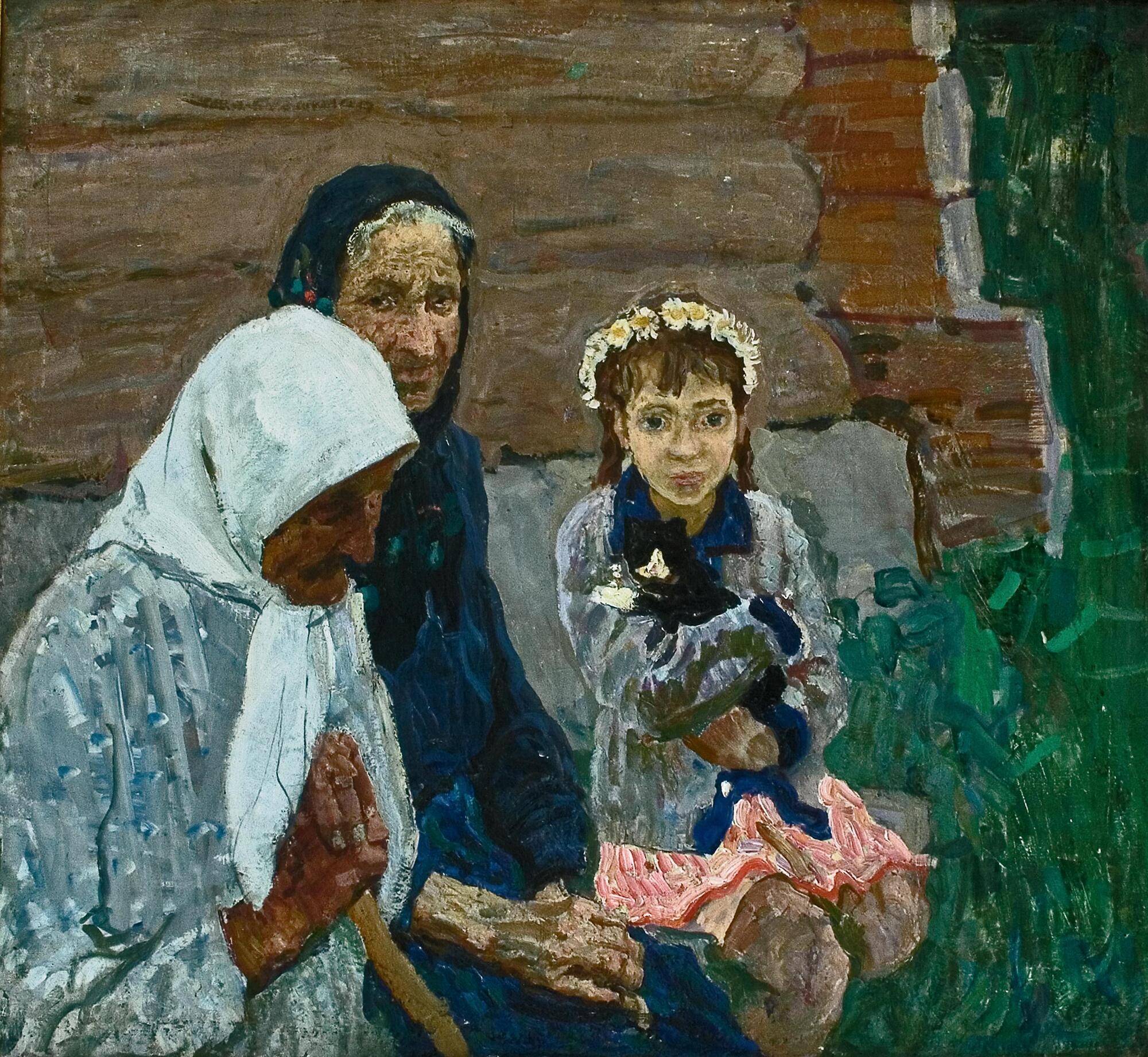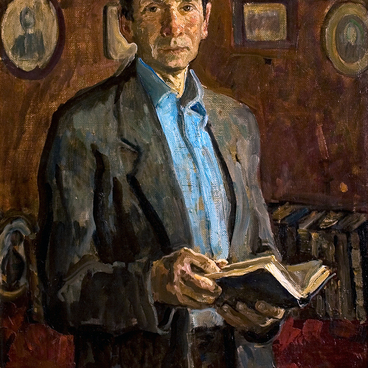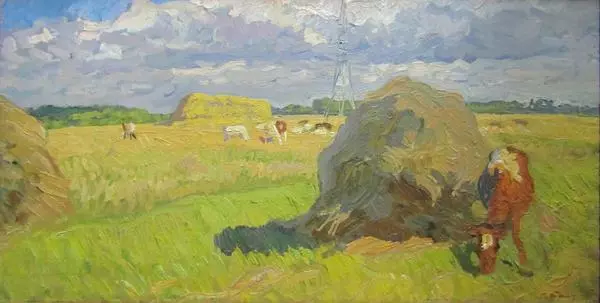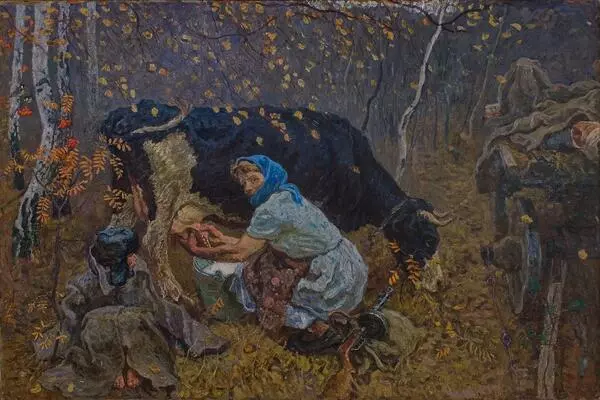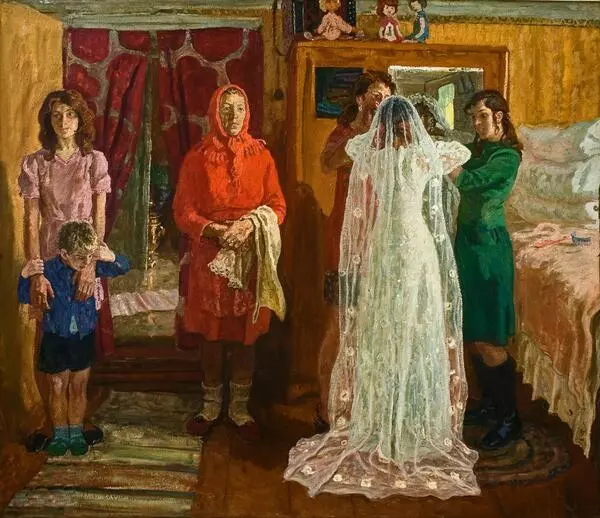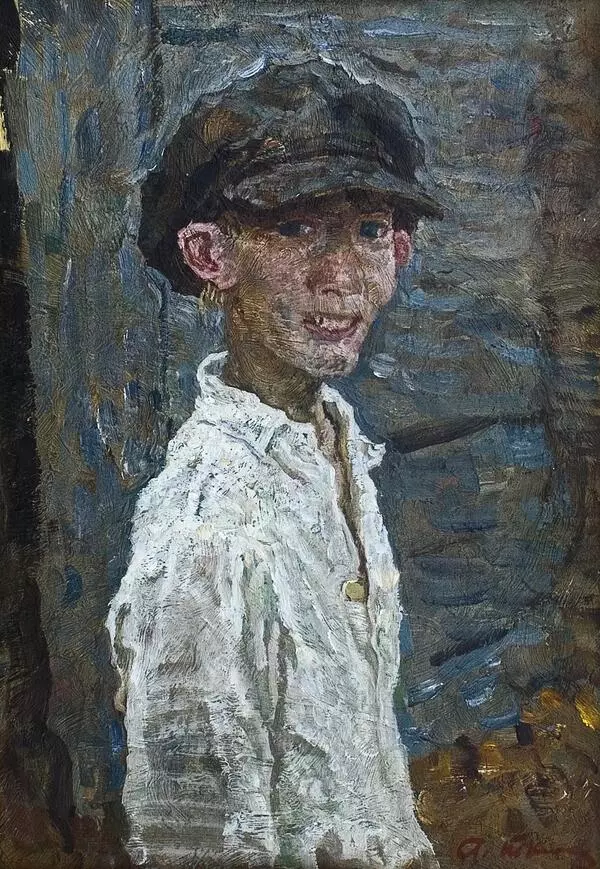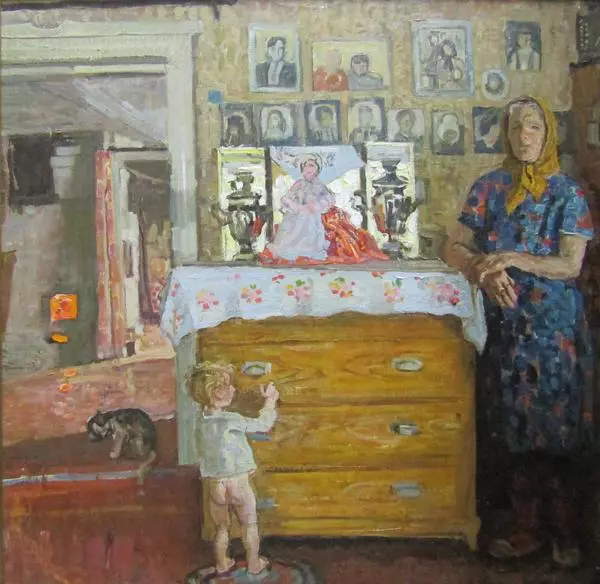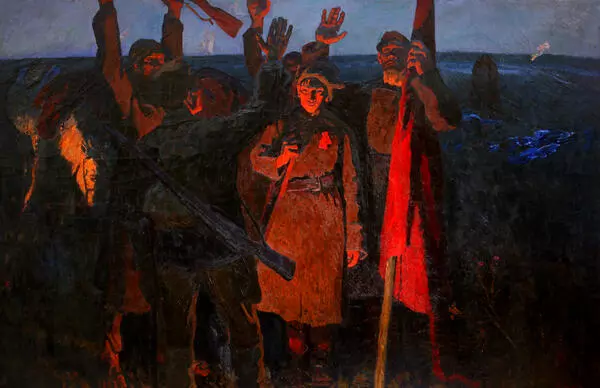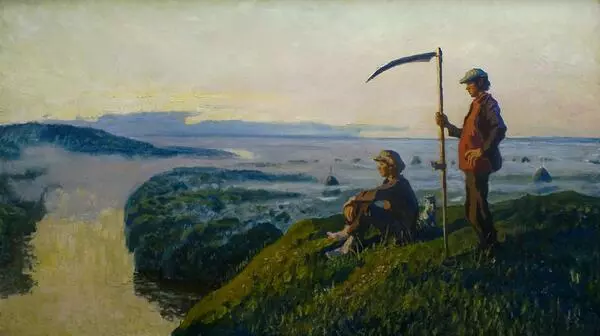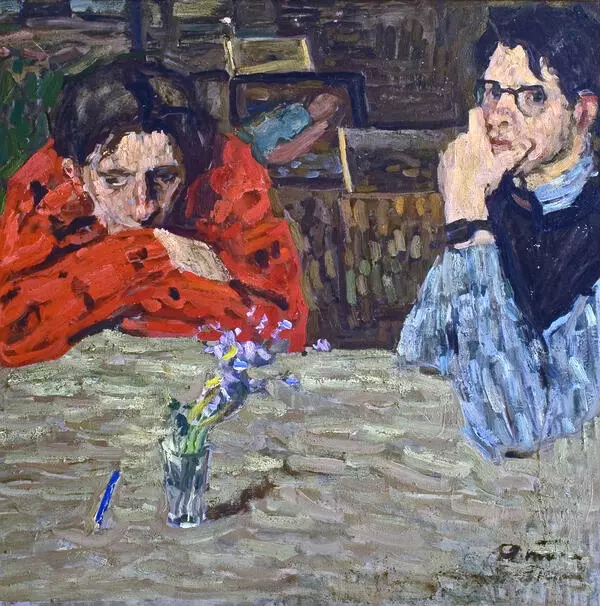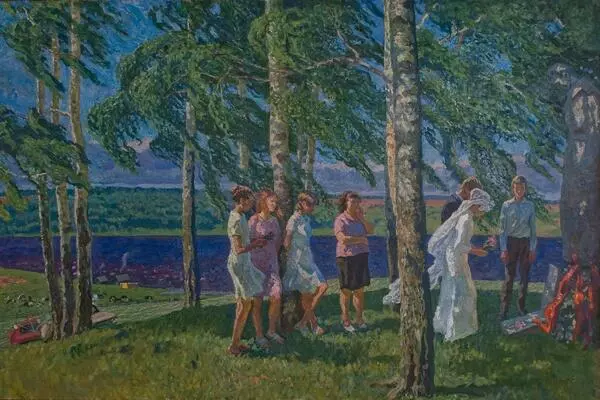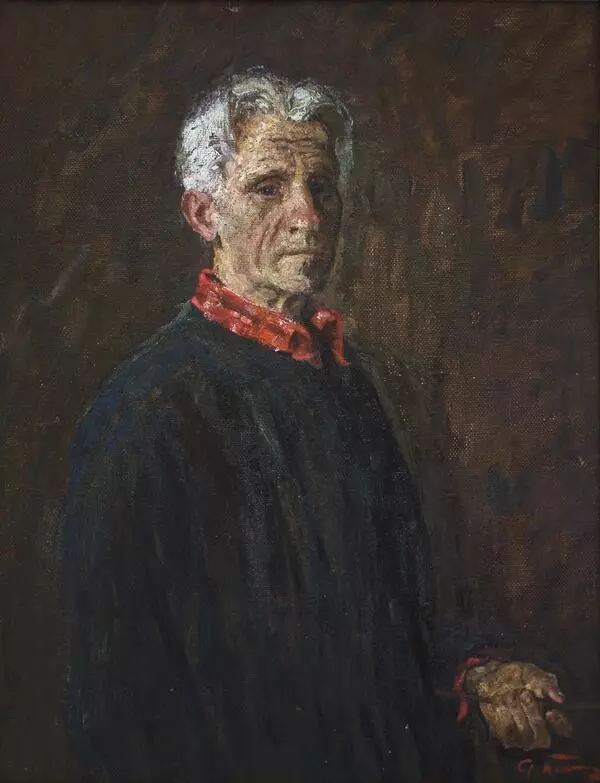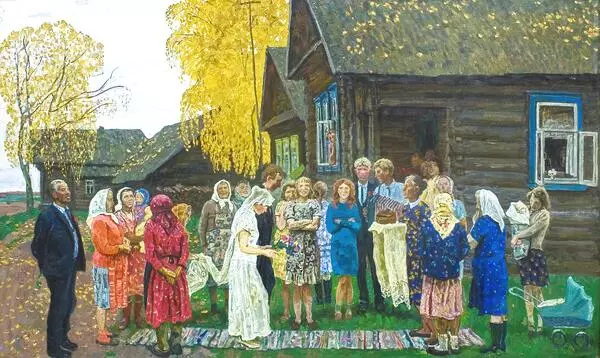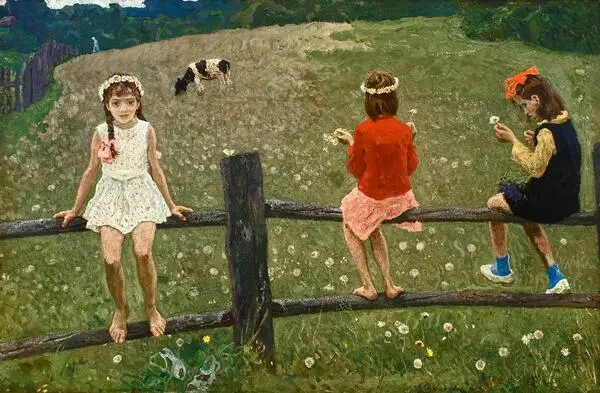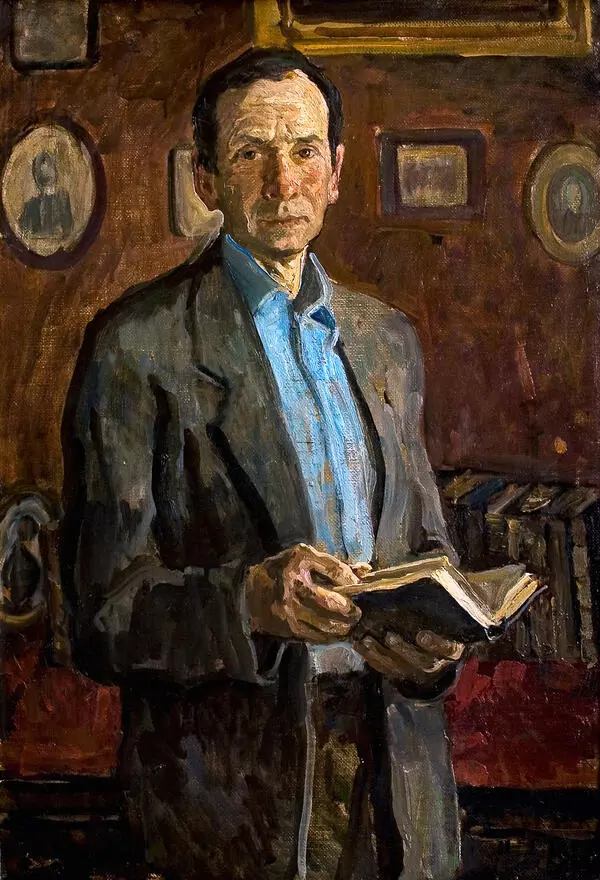The Tkachyov brothers finished ‘On the Zavalinka’ in the late 1960’s. The artists depict two elderly women and a young girl with a kitten in her hands, sitting next to the Zavalinka. Difficult life experiences are reflected in the elderly women’s eyes. Their faces are imprinted with the bitterness of loss and partings. By comparison, the girl is seems undisturbed - she is enjoying the warm day, the kitten in her hands and a wreath of daisies. Despite the large age gap, it is clear that all of them are close and are understanding towards one another.
The Zavalinka is a special place for village dwellers. It is a mound of earth around the house which is made to protect the structure from frost during winter. There is often a wooden deck placed on top of the mound, which not only prevents the rain from washing away the earth, but also transforms the zavalinka into a long bench, perfect for large groups to gather.
Today, a zavalinka is more often called a bench, placed along the wall of a house. This is where the family and guests would gather in the evenings. Important conversations would take place here, the village rabble-rousers would play their musical instruments, the older generation would read out poems and sing national songs and the children would play together. By depiction the elderly women sitting with the young girl on the zavalinka, the artists are emphasis their sincere wish to spend time with each other. In this way, the Tkachyov brothers create a painting about the continuity of generations and the joy of being with others.
Villages and their inhabitants have always inspired the Tkachyov brothers. Art historian Vitaliy Manin has written that we could call them village-artists not only because they have dedicated their craft to the village, but because they are village inhabitants in their spirit and in the representation of their thoughts. The Tkachyov brothers are sensitive to rural concerns and deeply understand the character of their subjects.
The Art historian has noted that the little village near the ‘Akademicheskaya Dacha’ allowed the brothers to move away from the city’s commotion and fill their minds with the more measured pace of rural life, ‘perceiving the village if not as the ideal, then at least as the norm of human existence’.
The Zavalinka is a special place for village dwellers. It is a mound of earth around the house which is made to protect the structure from frost during winter. There is often a wooden deck placed on top of the mound, which not only prevents the rain from washing away the earth, but also transforms the zavalinka into a long bench, perfect for large groups to gather.
Today, a zavalinka is more often called a bench, placed along the wall of a house. This is where the family and guests would gather in the evenings. Important conversations would take place here, the village rabble-rousers would play their musical instruments, the older generation would read out poems and sing national songs and the children would play together. By depiction the elderly women sitting with the young girl on the zavalinka, the artists are emphasis their sincere wish to spend time with each other. In this way, the Tkachyov brothers create a painting about the continuity of generations and the joy of being with others.
Villages and their inhabitants have always inspired the Tkachyov brothers. Art historian Vitaliy Manin has written that we could call them village-artists not only because they have dedicated their craft to the village, but because they are village inhabitants in their spirit and in the representation of their thoughts. The Tkachyov brothers are sensitive to rural concerns and deeply understand the character of their subjects.
The Art historian has noted that the little village near the ‘Akademicheskaya Dacha’ allowed the brothers to move away from the city’s commotion and fill their minds with the more measured pace of rural life, ‘perceiving the village if not as the ideal, then at least as the norm of human existence’.
